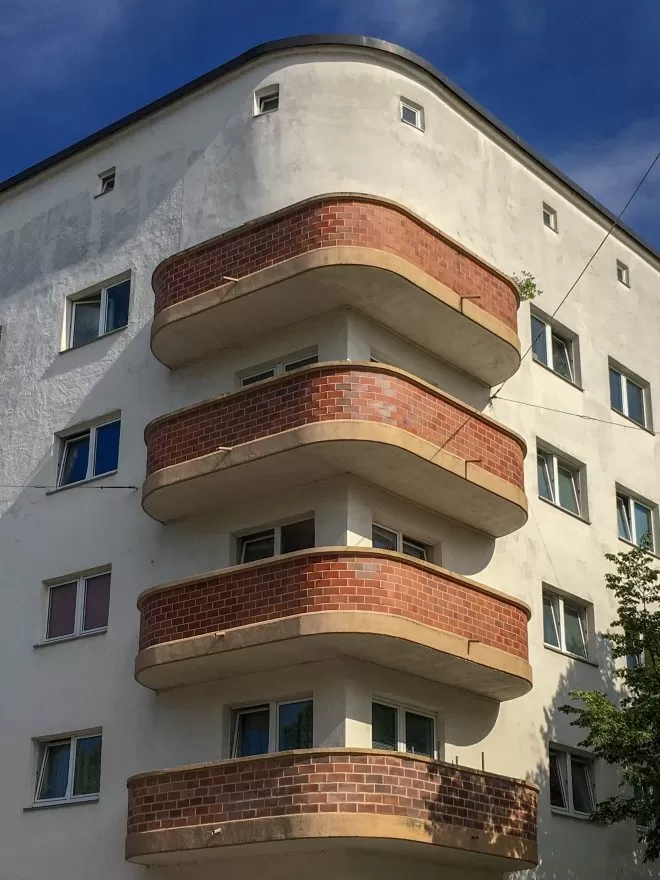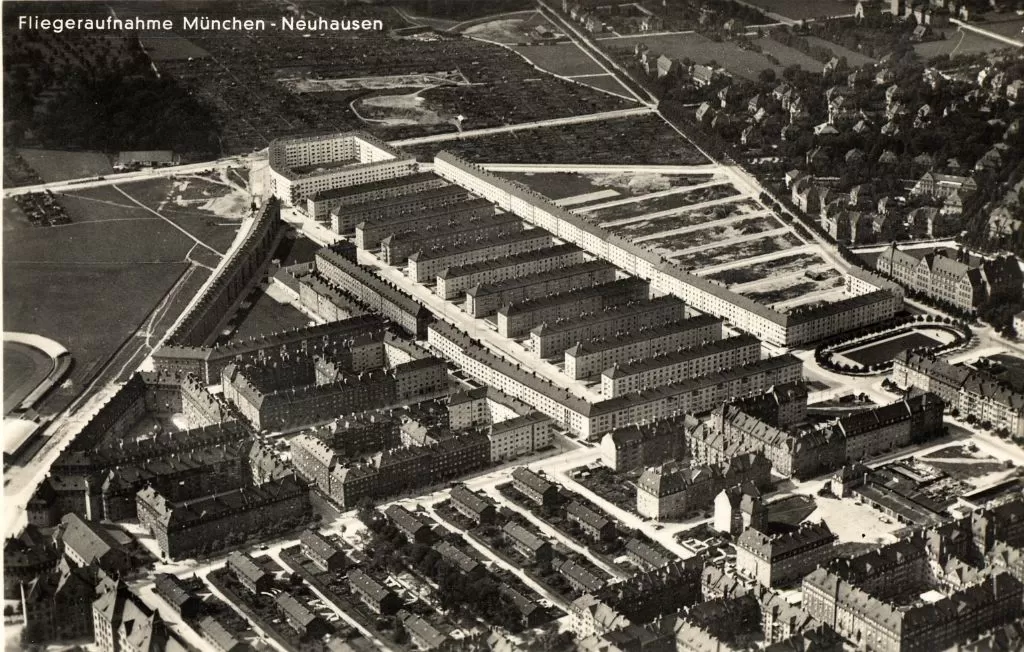
Neuhausen Housing Estate, Siedlung Neuhausen, 1928-1931. Overall planning: Hans Döllgast. Postcard
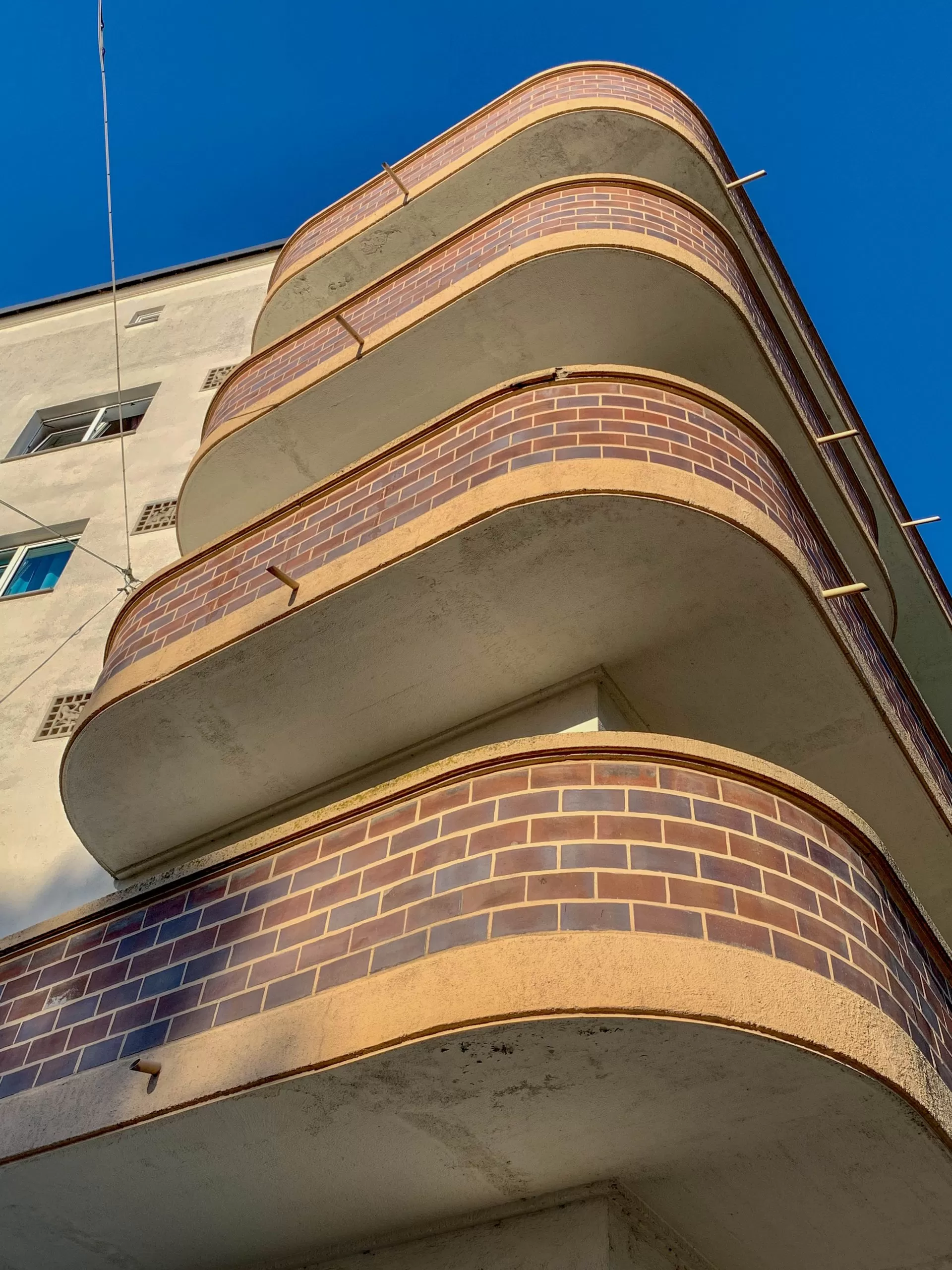
Amerikanerblock, 1930-1931. Architect: Otho Orlando Kurz. Photo: Daniela Christmann
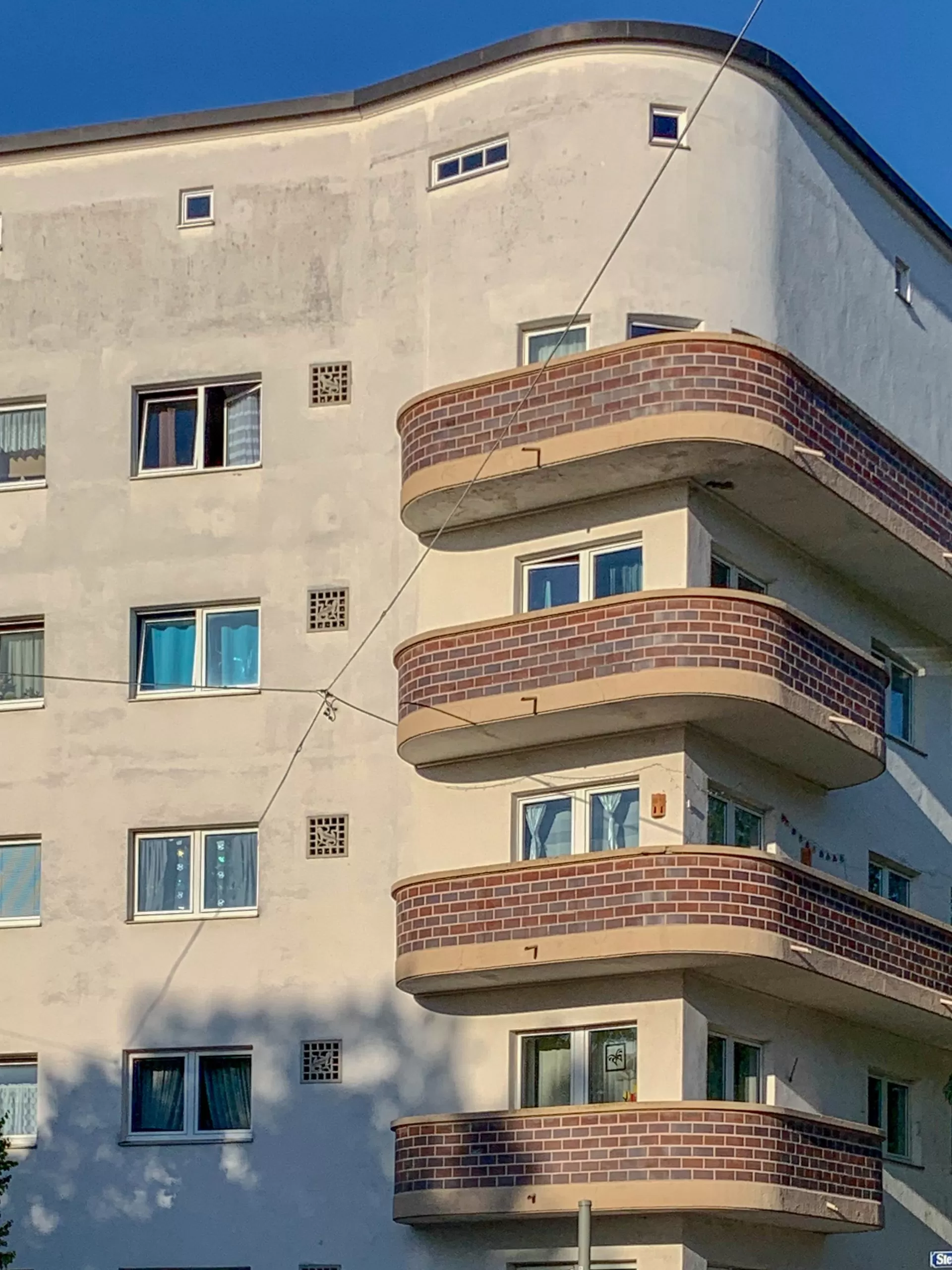
Amerikanerblock, 1930-1931. Architect: Otho Orlando Kurz. Photo: Daniela Christmann
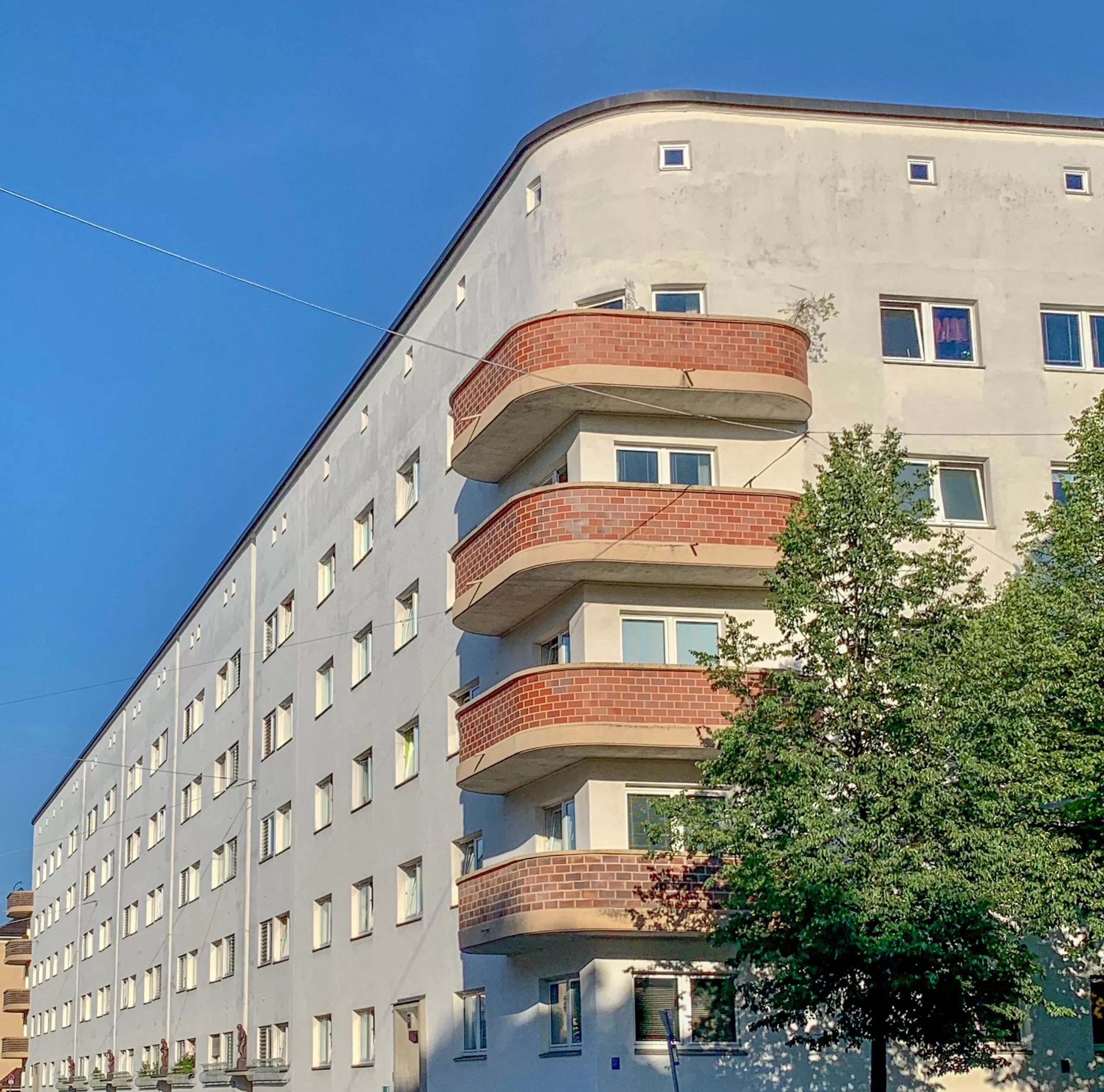
Amerikanerblock, 1930-1931. Architect: Otho Orlando Kurz. Photo: Daniela Christmann
1930 – 1931
Architect: Otho Orlando Kurz
Steubenplatz 1-2, Wendl-Dietrich-Straße 23-33, Gotelindenstraße 1-9, Arnulfstraße 214-224, Munich, Germany
The five-story flat-roofed apartment block was built from 1930 to 1931 according to plans by Otho Orlando Kurz. It closes the Neuhausen housing estate in Munich, which was built under the overall planning of Hans Döllgast, towards Steubenplatz.
Amerikanerblock
In 1931, the building block had a total of 210 apartments with living spaces between 58 and 114 square meters.
A striking feature of the four-winged complex are the clinker-clad balconies wrapped around the partially rounded corners. With a total of five stories, the apartment block is one story higher than the other buildings in the housing estate.
Erwin Kurz
On the north side of the complex, above the entrances to the houses, there are figures made of terracotta representing musicians. They were designed by the Munich sculptor and academy professor Erwin Kurz, father of architect Otho Orlando Kurz.
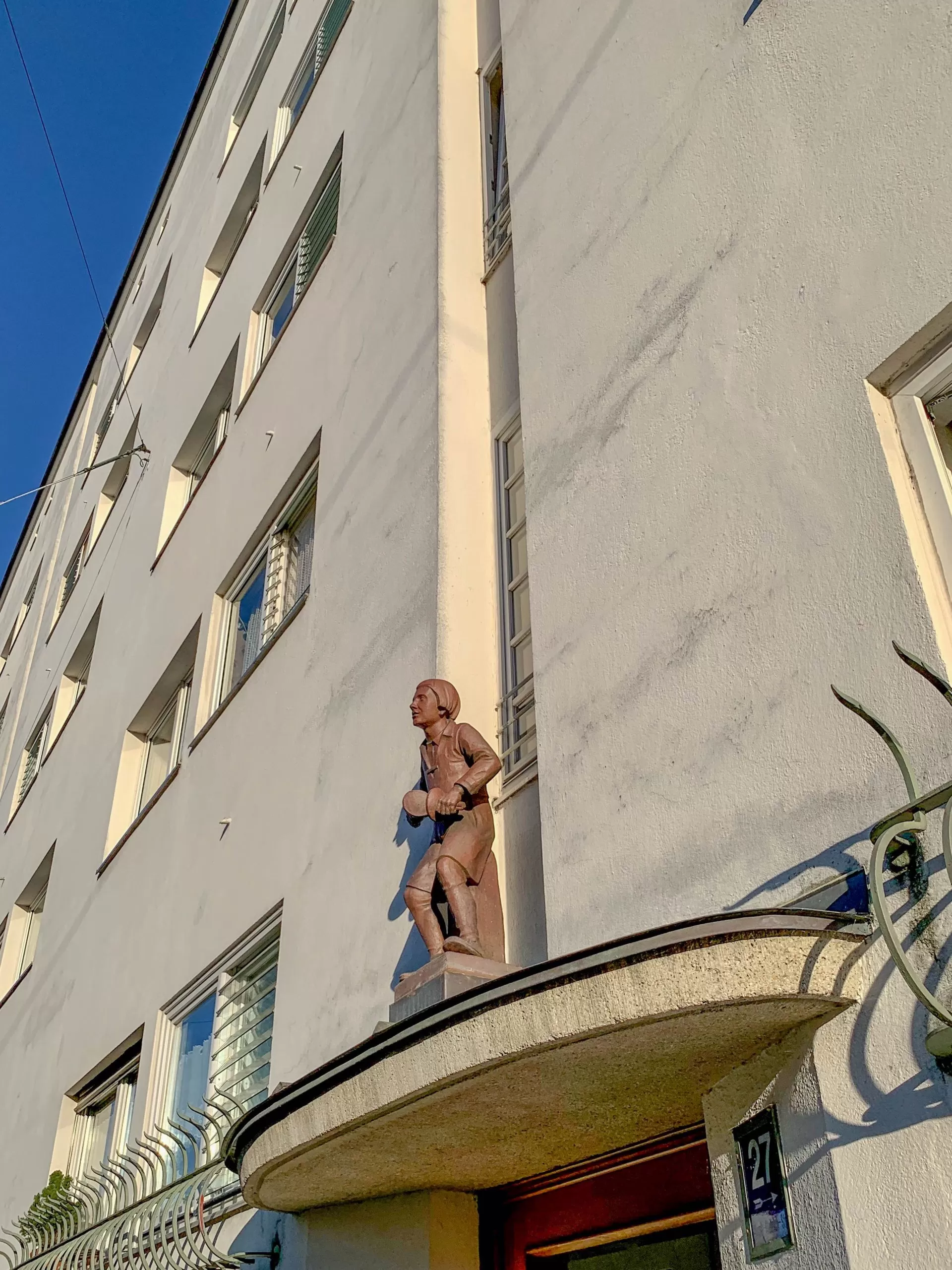
Amerikanerblock, 1930-1931. Architect: Otho Orlando Kurz. Photo: Daniela Christmann
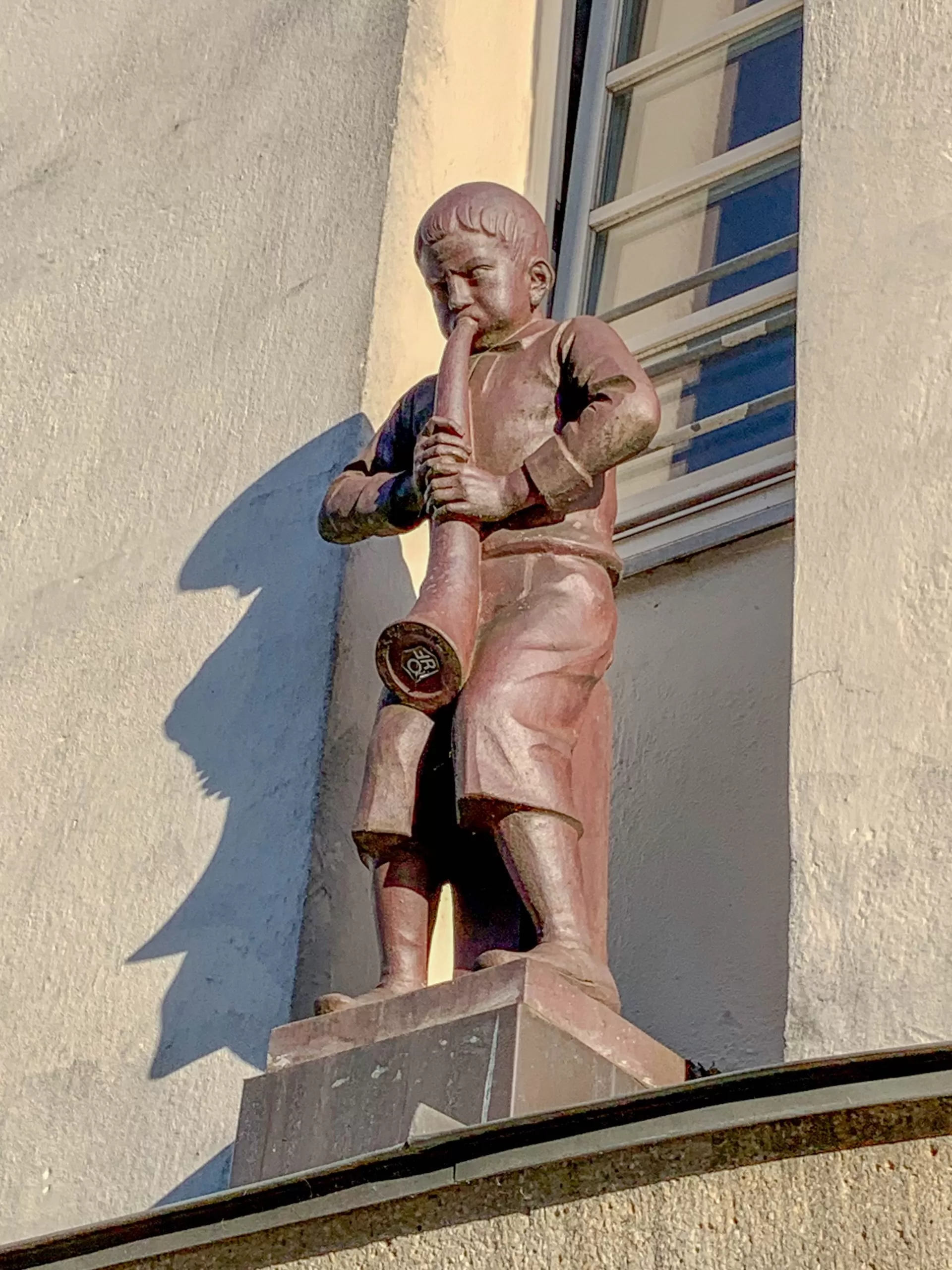
Amerikanerblock, 1930-1931. Architect: Otho Orlando Kurz. Photo: Daniela Christmann
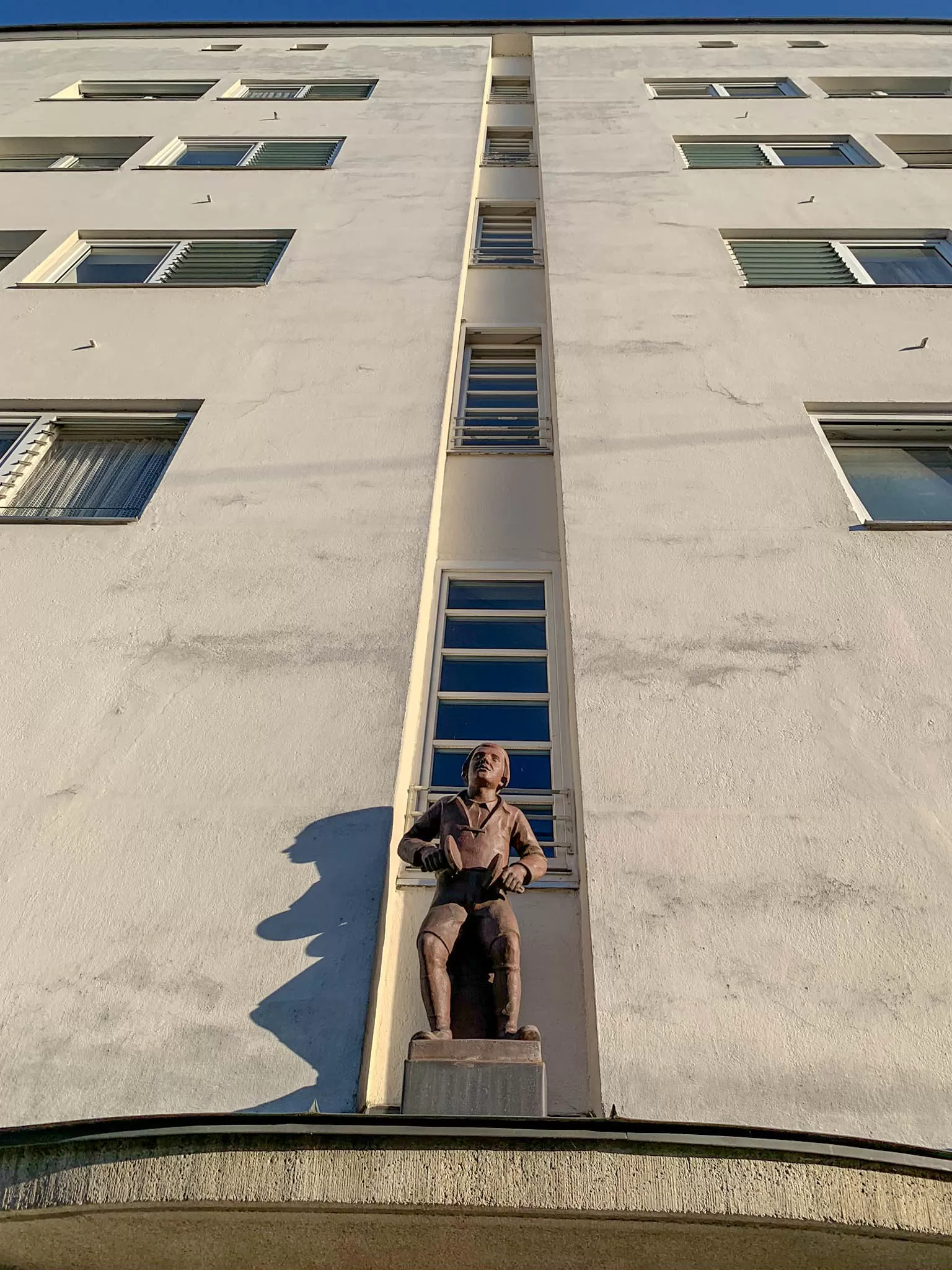
Amerikanerblock, 1930-1931. Architect: Otho Orlando Kurz. Photo: Daniela Christmann
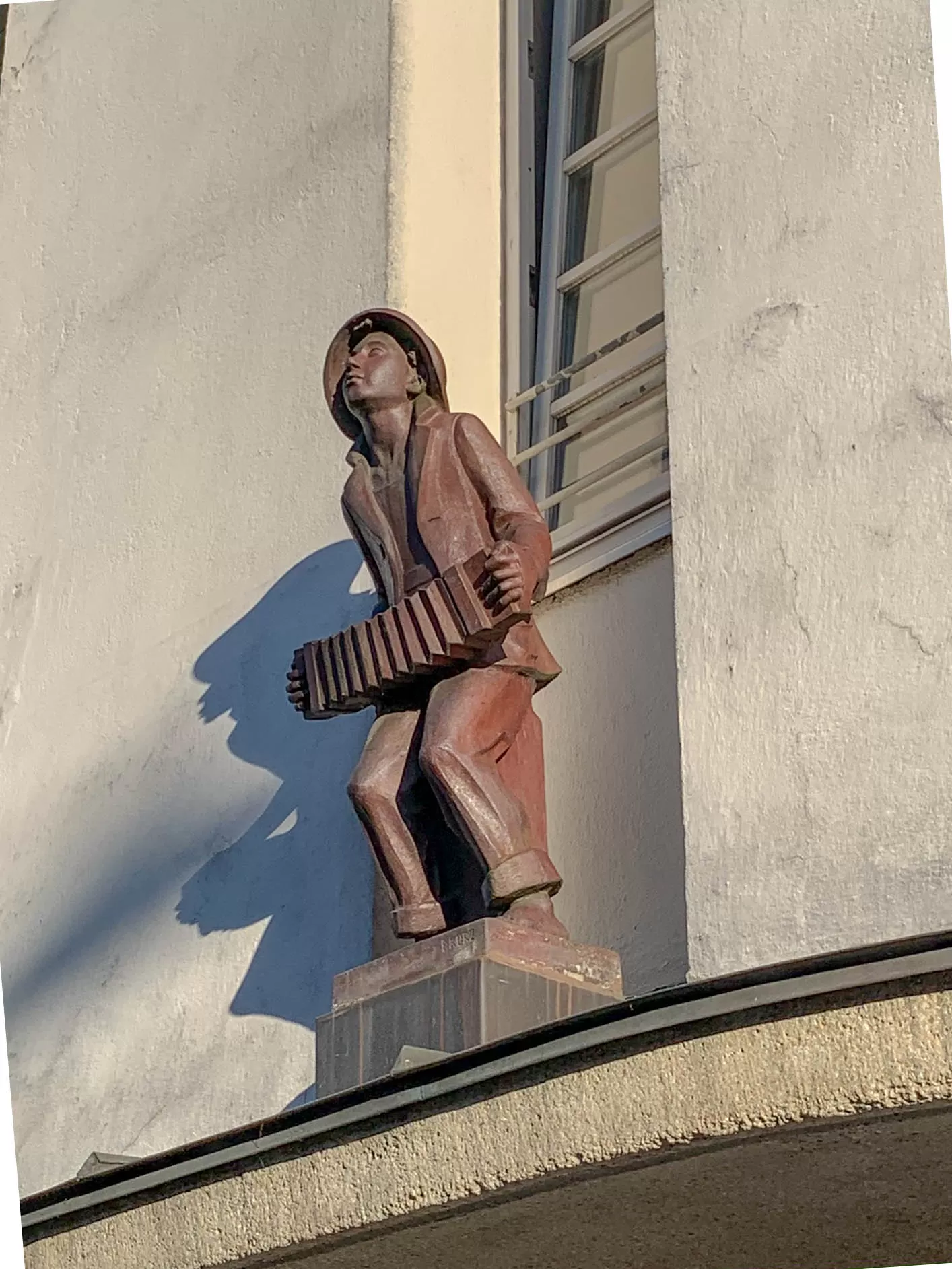
Amerikanerblock, 1930-1931. Architect: Otho Orlando Kurz. Photo: Daniela Christmann
The housing block owes its name to loans from the United States negotiated by the then mayor Karl Scharnagel to secure its financing.
The two entrances to the spacious courtyard of the Amerikanerblock can get closed by wrought-iron gates dating from 1930.
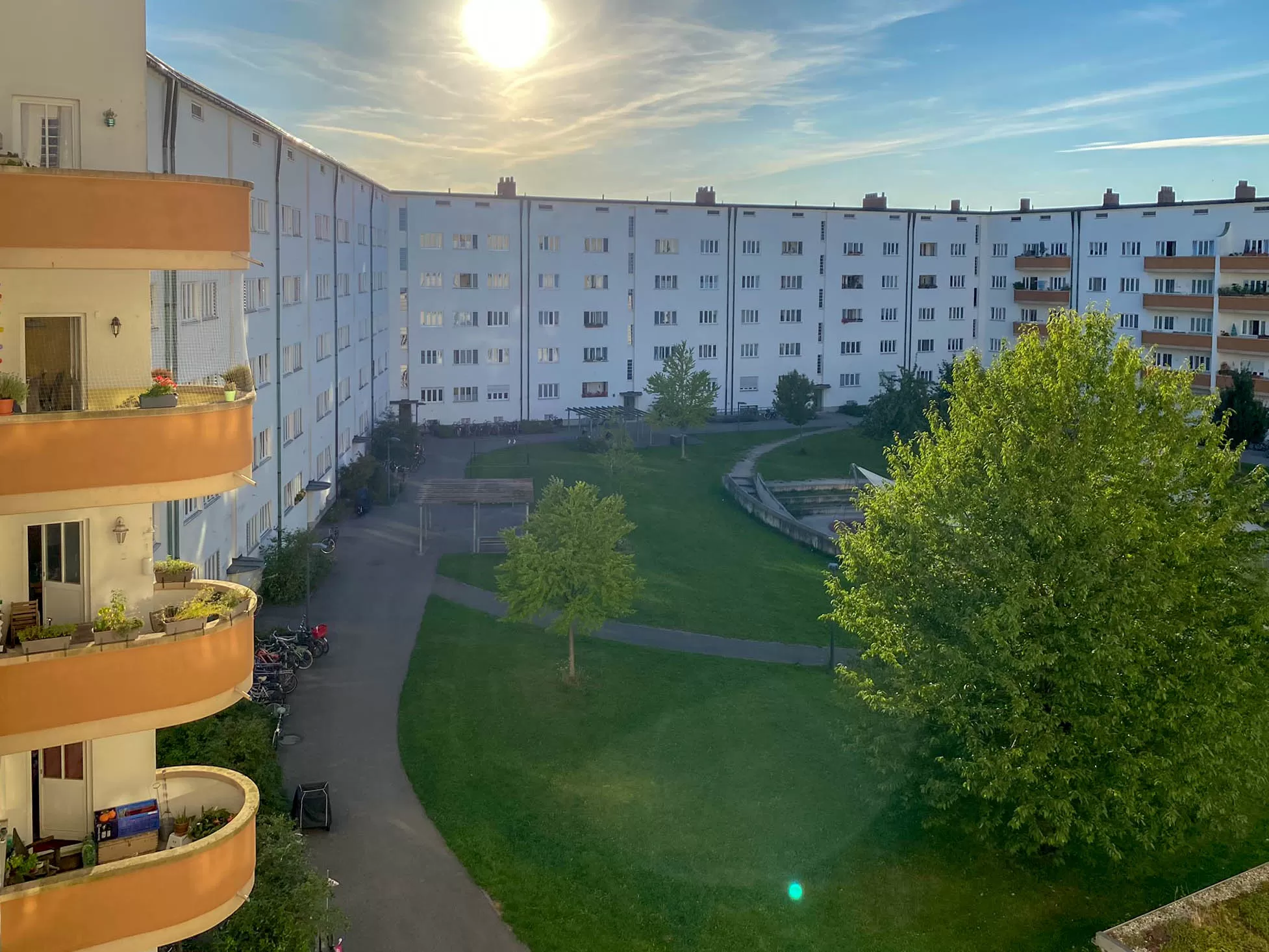
Amerikanerblock, 1930-1931. Architect: Otho Orlando Kurz. Photo: Daniela Christmann
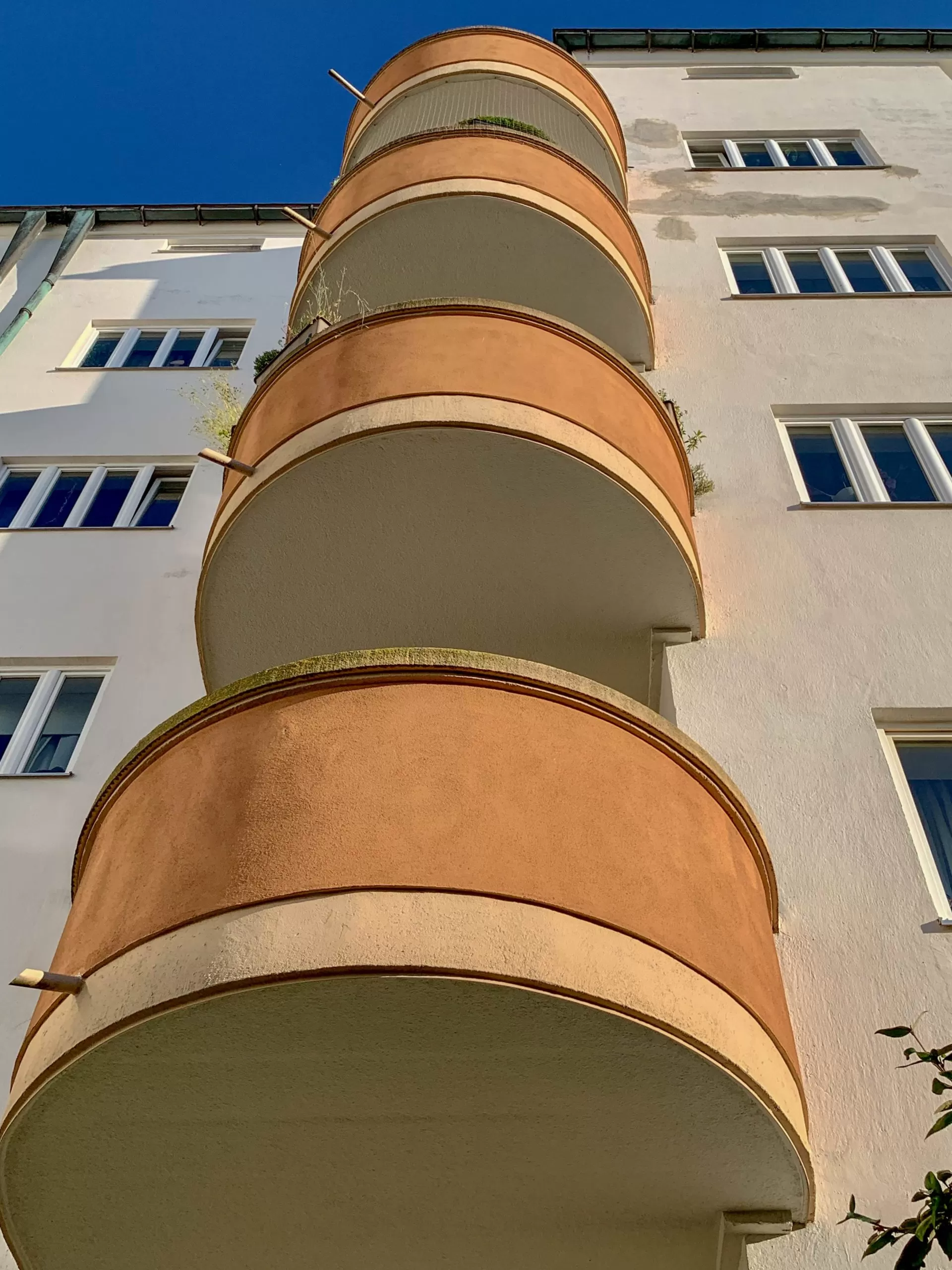
Amerikanerblock, 1930-1931. Architect: Otho Orlando Kurz. Photo: Daniela Christmann
The depictions on the gate wings show the four elements: air (zeppelin, windmill), fire (hearth, factory, salamander), water (sea creatures, ships) and earth (Adam and Eve, plants).
The designs were probably made by Munich sculptor Erwin Kurz, who had been repeatedly commissioned with the artistic decoration of his son’s buildings.
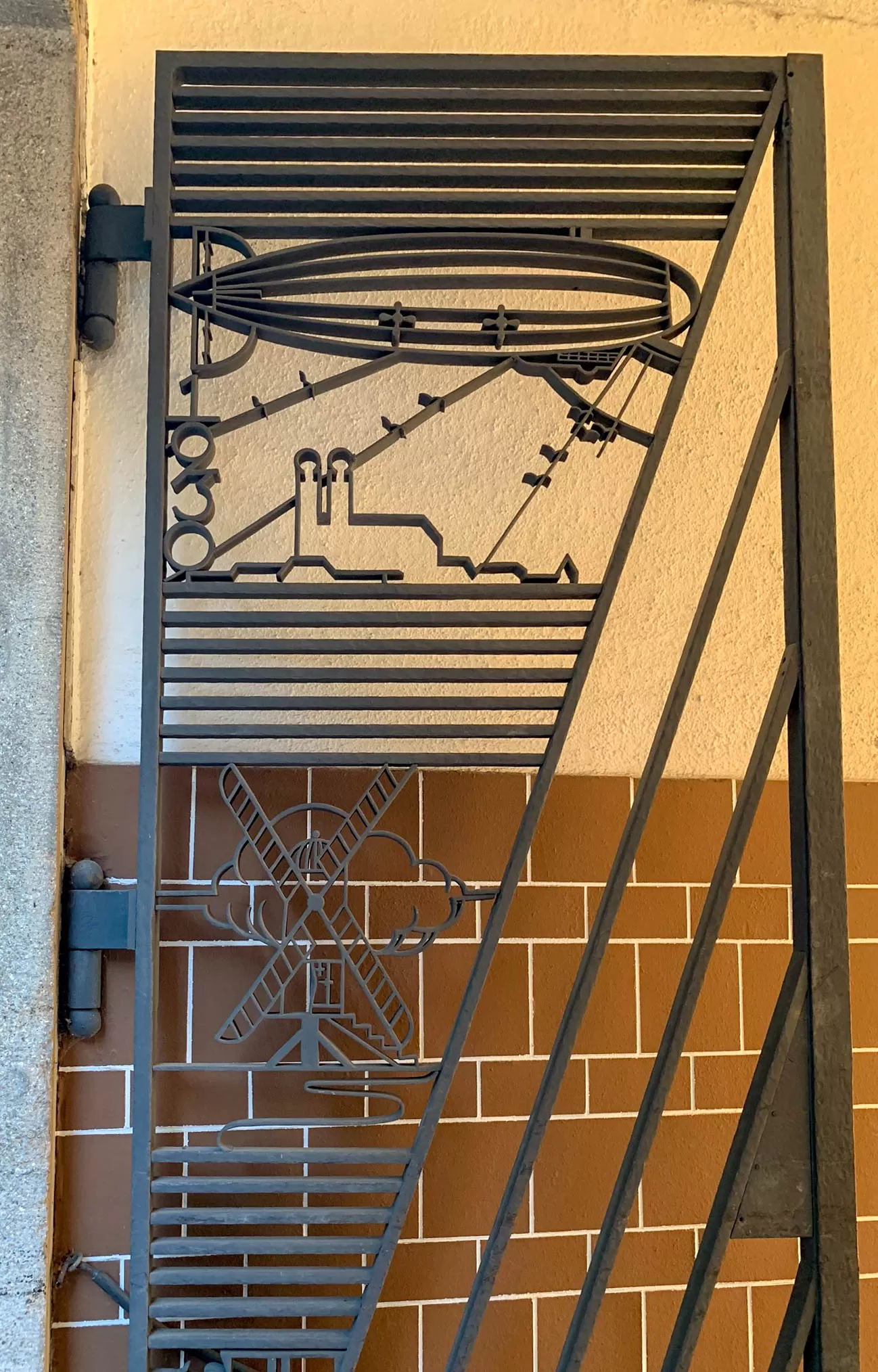
Amerikanerblock, 1930-1931. Architect: Otho Orlando Kurz. Photo: Daniela Christmann
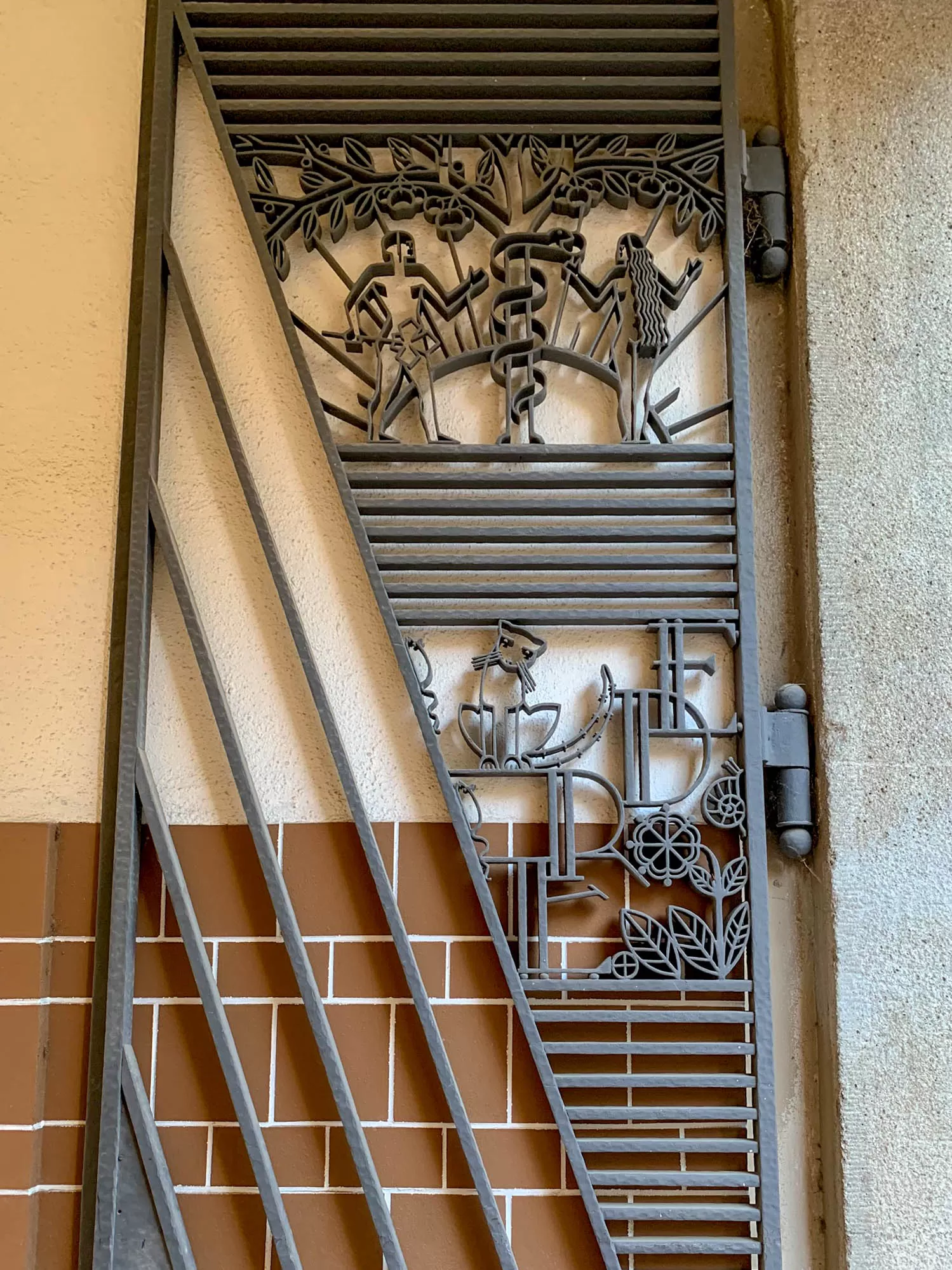
Amerikanerblock, 1930-1931. Architect: Otho Orlando Kurz. Photo: Daniela Christmann
As an example of the architecture of the New Objectivity, the Amerikanerblock is a listed building.
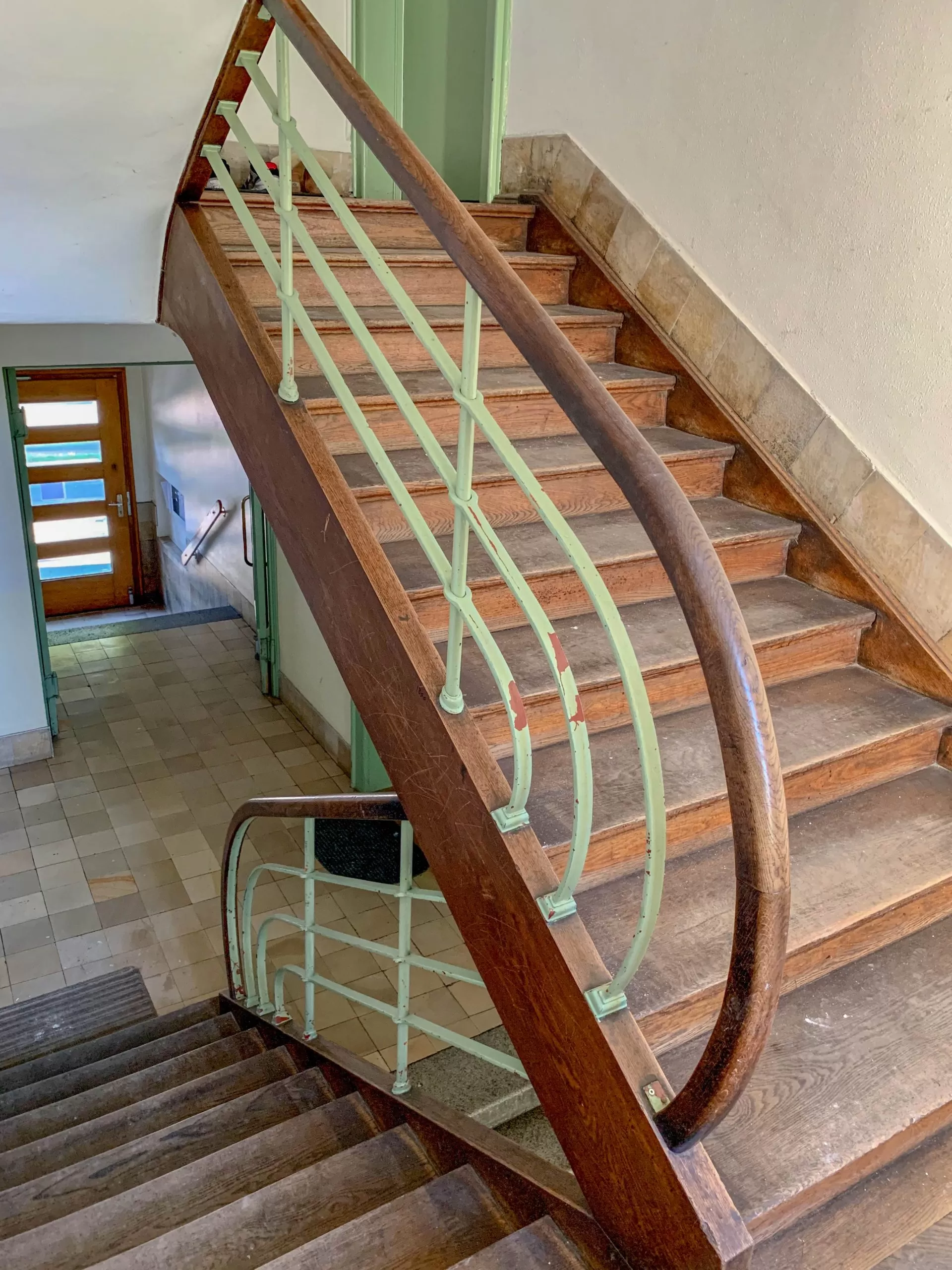
Amerikanerblock, 1930-1931. Architect: Otho Orlando Kurz. Photo: Daniela Christmann
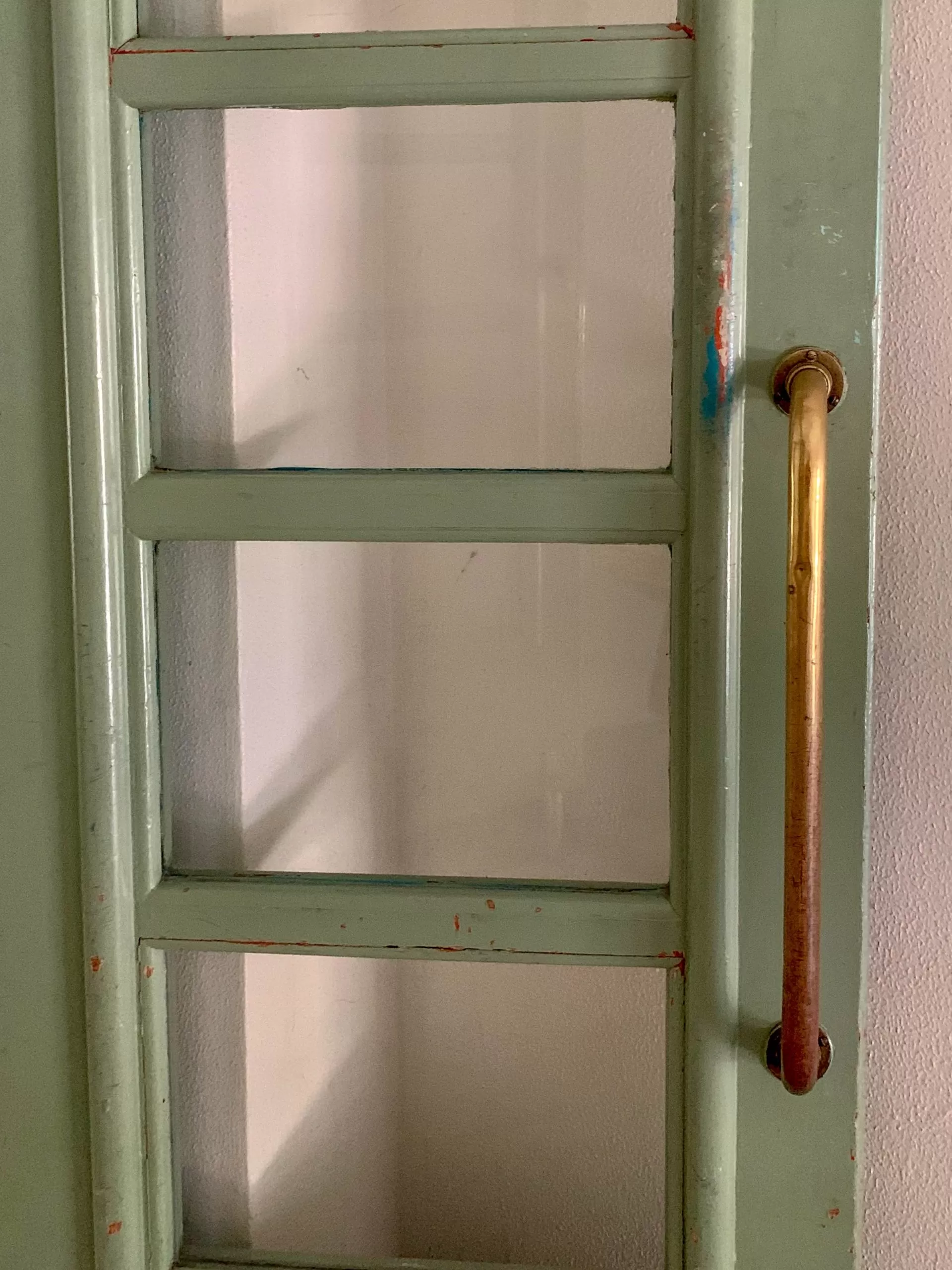
Amerikanerblock, 1930-1931. Architect: Otho Orlando Kurz. Photo: Daniela Christmann
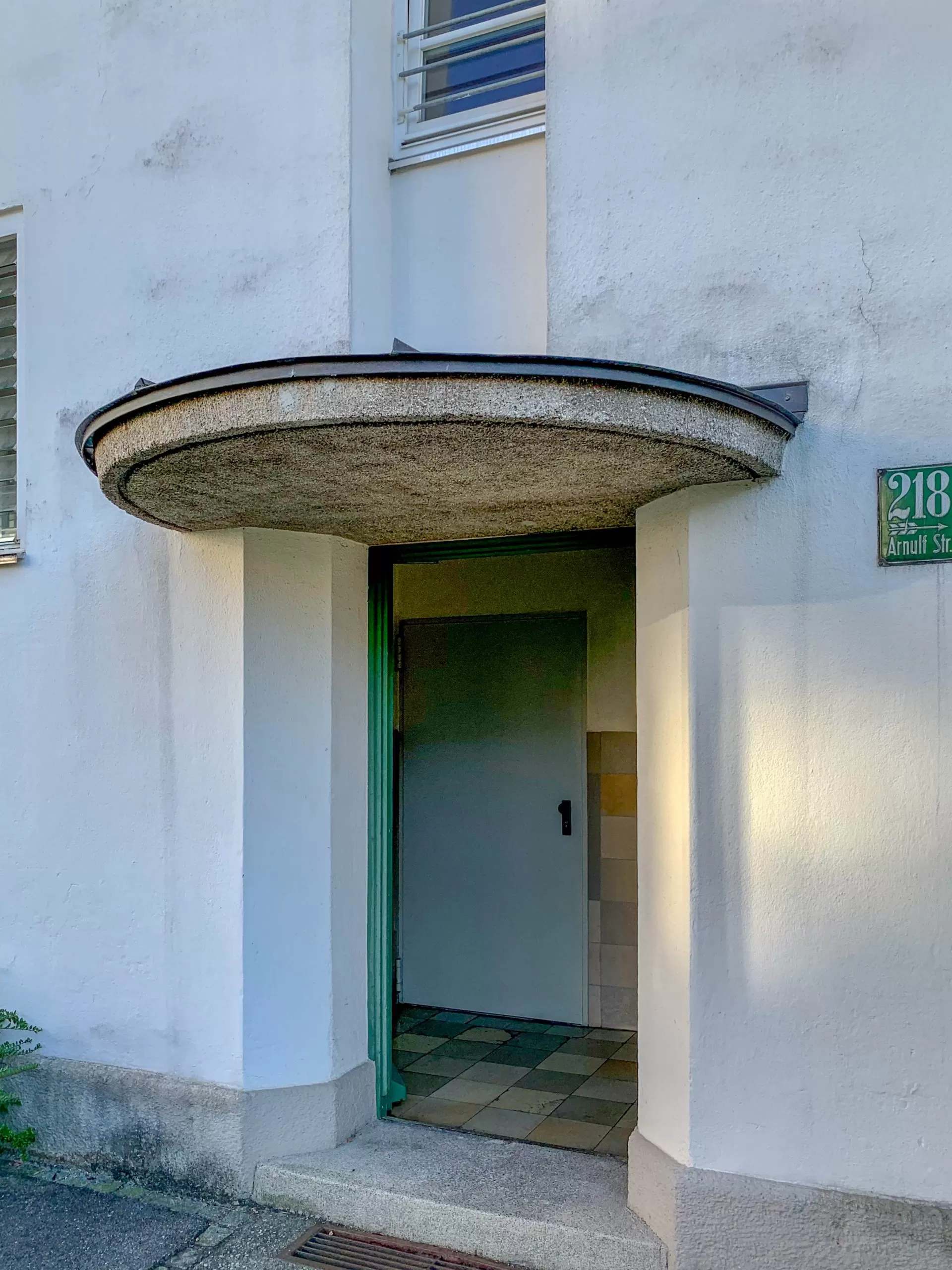
Amerikanerblock, 1930-1931. Architect: Otho Orlando Kurz. Photo: Daniela Christmann
Neuhausen Housing Estate
The Neuhausen housing estate was built between 1928 and 1930 on behalf of the specially founded Gemeinnützige Wohnungsfürsorge AG (GEWOFAG) (a non-profit housing association) under the overall planning of Hans Döllgast.
Housing Estate
It consists of strictly arranged north-south rows of apartments. The housing estate is enclosed by a perimeter structure on the long sides as well as closed building blocks on the east side of Steubenplatz (Amerikanerblock) and on the triangular remaining area north of Arnulfstraße. The artists’ courtyard (with studios designed by Uli Seeck) is also located there.
Inside the settlement, single-story buildings seal off the spaces between the rows of apartments from the thoroughfares.
The nearly two thousand apartments of the Neuhausen settlement, designed primarily for the middle class, had an average living space of 71.4 square meters. More than thirty stores and four restaurants guaranteed local supply.
Architects
A number of other architects were entrusted with the planning of the individual residential rows, including Johannes Ludwig, Sep Ruf, Franz Ruf, Gustav Gsaenger, Martin Mendler, Otto Pixis, Wolfgang Vogl, Peter Danzer, Hans Haedenkamp and Uli Seeck.
Numerous artists and craftsmen received commissions during the construction of GEWOFAG’s housing estates (Neuramersdorf estate, Walchenseeplatz estate, Neuhausen estate, Neuharlaching estate, Friedenheim estate), as Karl Preis, Chairman of the Supervisory Board of Gemeinnützige Wohnungsfürsorge, promoted art as an elementary component of architecture of the housing estates.
Artwork
Fountains, sculptures and sculptures by Emil Manz, Hans Stangl, J. Schwarzkopf, Ferdinand Liebermann and Ludwig Müller-Hipper adorn the spacious, green courtyards. Frescoes, sculptures and reliefs by Sepp Frank, Oskar Zeh, Erwin Kurz and Erich von Kreibig were installed on the walls and entrances of the houses, courtyard gates and window grilles were given an individual design.

